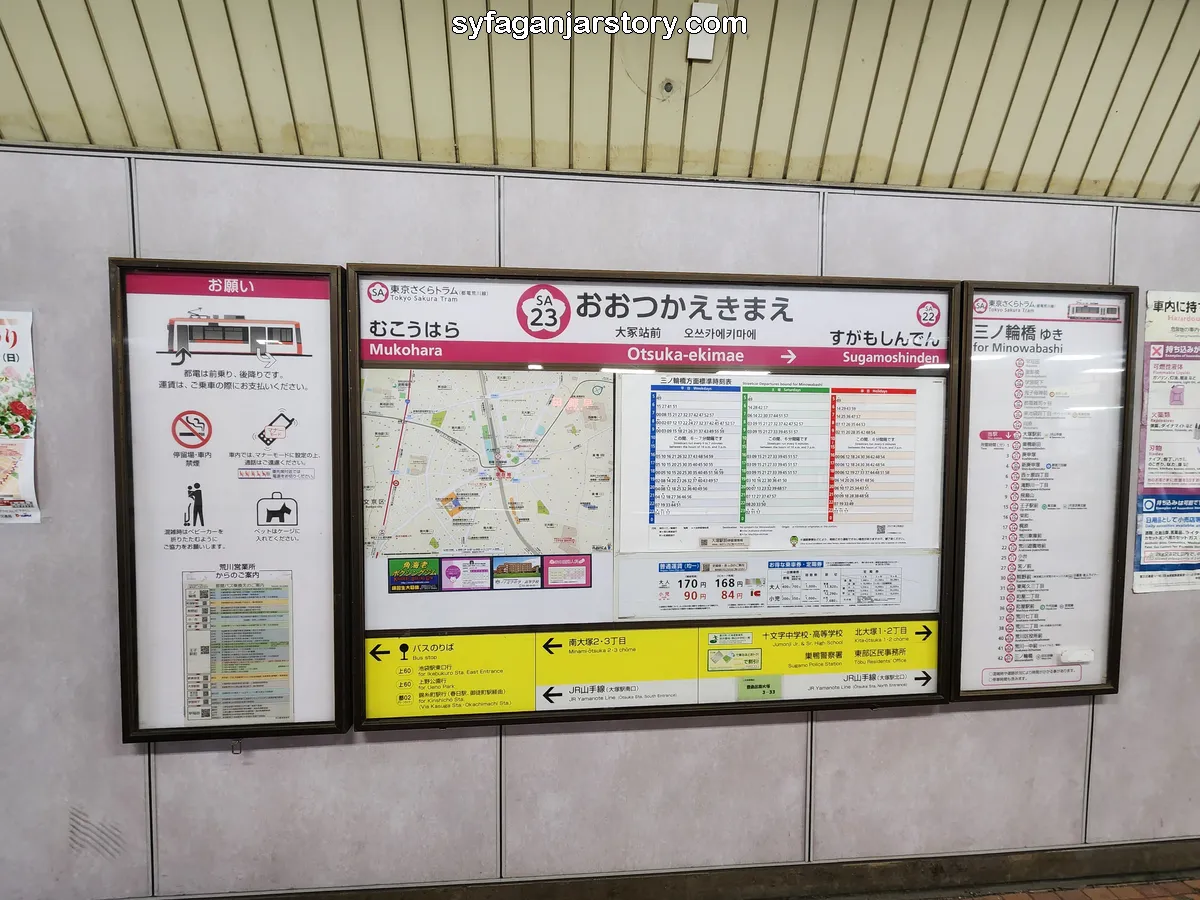Trams were a key form of transport in Tokyo before the 1960s. As the MRT and other transit options emerged, tram lines gradually vanished from Tokyo's streets.
Today, Tokyo only provides two tram lines: Toden Arakawa Line, known as Tokyo Sakura Tram, and Tokyu Setagaya Line. These lines are preserved due to their significant historical importance to Tokyo.
On our recent holiday in Japan, we were fortunate to have our hotel near a Tokyo Sakura Tram station, so we can experience this iconic tram multiple times.
The Toden Arakawa Line is called Tokyo Sakura Tram because passengers can see cherry blossoms along its route in spring. Sadly, we missed the cherry blossom season during our visit.
However, the absence of cherry blossoms doesn't diminish the tram's charm. The route is adorned with various flowers year-round and offers views of quaint alleys and charming traditional houses.
If you're planning to ride the Tokyo Sakura Tram on your visit to Japan, I'll guide you through the process. Read on to find out more!

The first thing you need to do is decide how you'll pay for your tram ride. The Tokyo Sakura Tram accepts three forms of payment: an IC card, a ticket pass, or cash.
We often use an IC card because it's easier than using cash. The tram accepts most major IC cards like Suica, Icoca, Passmo, PiTaPa, and others.
If you choose to pay with cash, make sure you have the exact fare, as you won't get change back if you pay too much.
You can also buy a Toden 1Day Pass or Toei 1Day Pass (Toei Marugoto Kippu) at certain tram stops. These passes let you ride the tram as much as you want for one day.


Now, let's head to the nearest Tokyo Sakura Tram station. These stations are more like bus stops than train stations; they don't have gates or barriers like train stations do.
Once you get to the station, you can join the line of waiting passengers. While there are some seats available, it's a kind gesture to leave these for elderly or passengers with special needs.
At the bigger tram stations, you might see an attendant, but most stations don't have one. However, there's no need to worry. The stations have lots of information displayed on the walls, including routes, fares, and more.
The tram travels from Minowabashi Station all the way to Waseda Station, stopping at a total of 30 stations along its route.


When the tram we're waiting for arrives, we can enter through the front door. Next, you can tap your IC card or put coins into the machine next to the driver. If you have a ticket pass, just show it to the driver.
The fare for the Tokyo Sakura Tram is the same for every trip, whether it's a short or long journey. For adults, the fare is 170 yen in cash or 168 yen with an IC Card. For children, it costs 90 yen in cash or 84 yen with an IC Card.
As we get on and pay, the driver usually greets us and the other passengers warmly. I don't always understand what he says, but it might be a thank you or welcome.
Once you've paid, it's best to move to the middle of the tram, so you're not blocking others who are getting on. When everyone is aboard, the driver will close the doors and start the tram.

The Tokyo Sakura Tram uses relatively small trams. They have a limited number of seats, mainly for those with special needs. When these seats are taken, most passengers stand for the duration of the ride.
The tram's interior varies from one unit to another. Some have a classic wooden design, while others feel more modern, like a typical train. The tram moves at a leisurely pace, allowing you to fully enjoy the view outside.
As the tram approaches each station, the driver makes announcements over a loudspeaker in Japanese. To make sure you don't miss your stop, it might be helpful to keep an eye on Google Maps.
When you're close to your destination, press the stop button on the tram's wall. This is important because the tram stops at a station only if someone needs to get on or off. If no one signals to stop, the tram will continue on its route.

Once the tram reaches your stop, you can leave through the rear door. Remember, there's no need to tap your IC card again; you already paid when you got on.
So, these are the steps for enjoying a ride on the Tokyo Sakura Tram. It's quite similar to taking a bus in Tokyo. I definitely suggest trying it, especially during the cherry blossom season for the lovely views.
The tram route takes you past several interesting spots, including Kishimojin Temple, Jizo Dori Shopping Street, and Nanushinotaki Park, among others. Why not give the Tokyo Sakura Tram a try?

